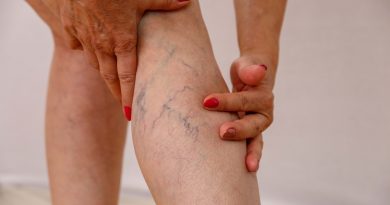The evolution and impact of hand surgery: an insight from Dr. Chris Pederson

Hand surgery has a rich history and a wide range of applications, from treating everyday conditions like tendonitis to performing complex nerve repairs and even hand transplants. Dr. William Pederson, a Baylor Medicine plastic surgeon with decades of experience, offers a deep dive into the field, shedding light on both its historical roots and modern advancements.
The scope of hand surgery
“Hand surgery encompasses a variety of procedures and treatments, typically focusing on the area from the elbow down,” said Pederson, chief of the Division of Plastic Surgery at Baylor College of Medicine. “Much of our work involves non-surgical interventions, such as treating tendonitis with splints or steroid injections, which often resolve the issue without the need for surgery. However, the scope of hand surgery extends far beyond this, involving the treatment of wrist pain, lacerations, tendon injuries and nerve injuries – some of which are life-altering.”
Pederson said he sees a lot of finger injuries from accidents with jobs or hobbies. “The hand is used for everything, and sometimes accidents happen.”
Nerve surgery: a test of patience
Nerve surgery is a significant part of Pederson’s practice. This specialized area of surgery involves repairing nerves that have been damaged, often due to trauma. The process is meticulous and demands a great deal of patience from both the surgeon and the patient. Nerve regeneration is slow, growing at about an inch per month. For example, if a major nerve is cut in the forearm, it may take a year or more for sensation to return and even longer for muscle function to be restored.
“When you repair a nerve, it has to grow back from wherever it’s repaired, and it grows back an inch a month. If you cut a big nerve in your forearm, you’re not going to have sensation for like a year. The muscle might come back if you do a good repair, but that may not come back for 10 or 12 months.”
Historical perspective: the birth of modern hand surgery
Hand surgery as a specialized field began during World War II. The war brought high incidence of hand injuries, which were initially treated poorly by general practitioners. In response, the U.S. government established specialized hand centers, such as the one in Valley Forge, Pa. Dr. Joe Boyes, a surgeon from Los Angeles, was instrumental in developing these centers and improving the treatment of hand injuries.
After the war, these surgeons, who mostly were general surgeons, formed the American Society for Surgery of the Hand, marking the beginning of hand surgery as a distinct specialty. This development was mirrored in Europe, where surgeons like Sir Harold Gillies in England, known as the father of modern plastic surgery, also made significant advancements in the treatment of hand injuries.
The future of hand surgery
One of the most exciting yet challenging areas of hand surgery today is hand transplantation. While the procedure holds immense potential for restoring function to those who have lost their hands, there are some difficulties. One challenge is that nerve regeneration is slow and often incomplete, particularly when the transplantation occurs above the elbow.
“Hand transplantation has been performed successfully in some cases, but it is not yet widely adopted due to the lack of insurance coverage and the complex nature of the surgery,” Pederson said. “Additionally, the long-term success of these transplants is closely tied to the patient’s adherence to immunosuppressive medications, which prevent the body from rejecting the new hand.”
Pederson is hopeful that hand transplantation will become more common as techniques improve and insurance coverage expands.
By Tiffany Harston, communications associate in the Michael E. DeBakey Department of Surgery



